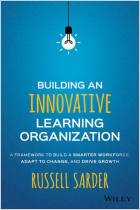
Learning for a Living
Learning at Work Is Work, and We Need to Make Space for It.
Read or listen offline
Amazon KindleRecommendation
It is so refreshing to see an article that acknowledges its own limitations: "I have never met a manager who told me that people learn to succeed, lead, or change by reading articles like this," writes Gianpiero Petriglieri. "You learn from others whose expertise you lack and from personal experience, they say. I can’t argue with that." His writing alone may not lead to change, but Petriglieri is too modest: He argues convincingly for incorporating a balanced diet of both directive, top-down trainings and free-form, open environments that foster experimentation and help employees overcome their fear of failure. His clear examples that illustrate how nontraditional learning opportunities can lead to insights and cathartic change may well inspire change in individuals, teams and companies.
Summary
About the Author
Gianpiero Petriglieri is an associate professor of organizational behavior at the European Institute of Business Administration (INSEAD). He has undertaken extensive research into management practices.


















Comment on this summary